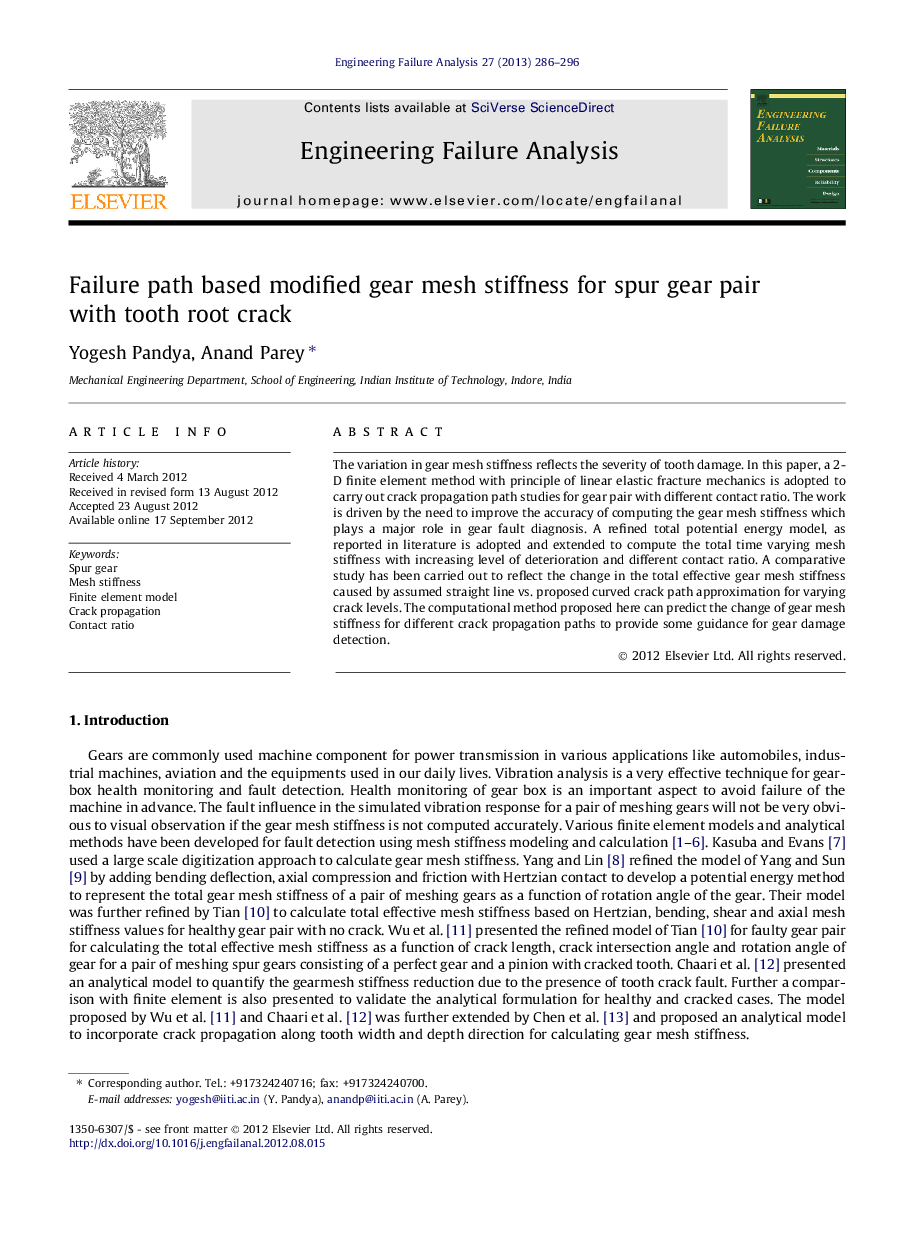| Article ID | Journal | Published Year | Pages | File Type |
|---|---|---|---|---|
| 774163 | Engineering Failure Analysis | 2013 | 11 Pages |
The variation in gear mesh stiffness reflects the severity of tooth damage. In this paper, a 2-D finite element method with principle of linear elastic fracture mechanics is adopted to carry out crack propagation path studies for gear pair with different contact ratio. The work is driven by the need to improve the accuracy of computing the gear mesh stiffness which plays a major role in gear fault diagnosis. A refined total potential energy model, as reported in literature is adopted and extended to compute the total time varying mesh stiffness with increasing level of deterioration and different contact ratio. A comparative study has been carried out to reflect the change in the total effective gear mesh stiffness caused by assumed straight line vs. proposed curved crack path approximation for varying crack levels. The computational method proposed here can predict the change of gear mesh stiffness for different crack propagation paths to provide some guidance for gear damage detection.
► Finite element modeling of cracked tooth to extract crack propagation path Information. ► Analytical modeling and modification of existing expression for calculation of gear mesh stiffness for more than two teeth pair in mesh. ► Calculation of mesh stiffness for low and high contact ratio gear pair with crack. ► Comparison of total effective mesh stiffness for straight crack and simulated crack.
